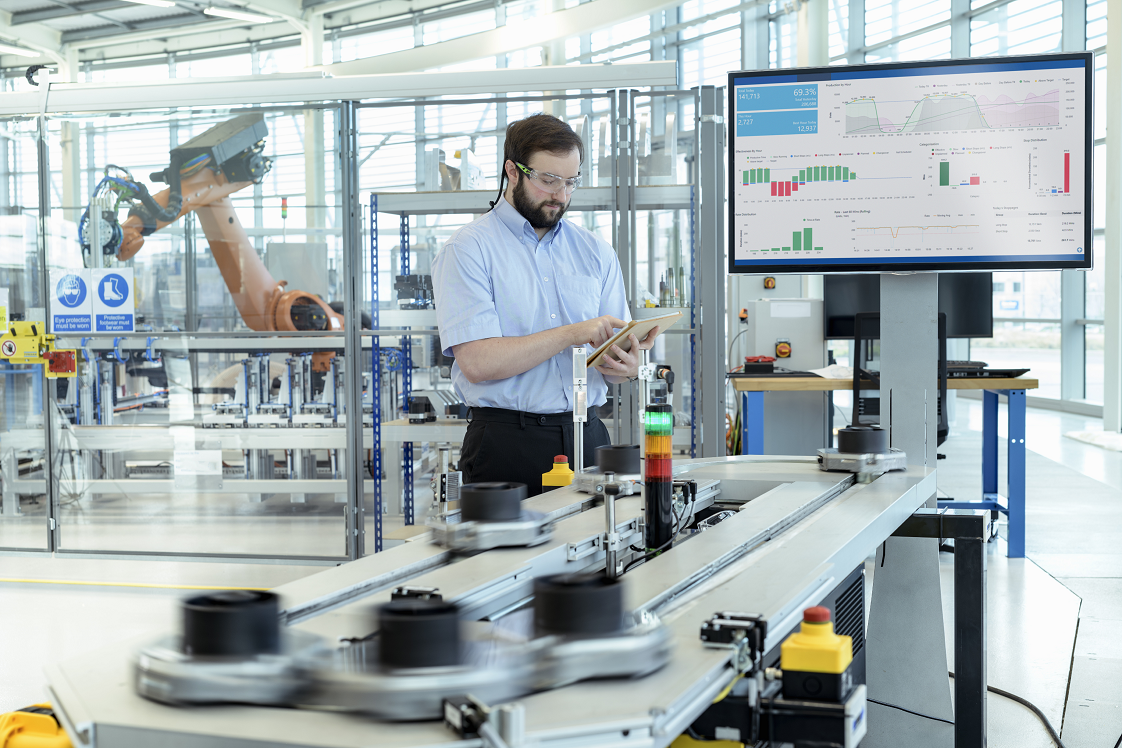Robotic Process Automation: A Recipe for Less Errors and More Productivity

The producers that invested in implementation of robots for production lines are now focusing on robotic process automation (RPA). It brings them significant improvement in the area of management, as well as increasing productivity. As industrytoday.com states, RPA is going to play a more and more important role in production.
The RPA technology based on software robots or AI develops a list of actions using a graphic interface (GUI). In it, the technology monitors how the user processes the given task and then performs automation by repeating these tasks right in GUI. The RPA tools also enable data processing in more applications and in one another as well – they can, for example, receive emails containing an invoice, extract data and then write them to the accounting system etc.
“Increasingly, though, manufacturers are adopting RPA to reduce human errors and increase productivity in other applications, from inventory management and invoice processing to data migration, customer support, and risk management. A recent article in The Manufacturer notes that a German automaker is using RPA to handle 28 different tasks – including customs import processing and commercial finance contract generation – saving 2,650 hours monthly and $6 million annually,” says Tony Higgins, the product director of Blueprint Software Systems.
A recent study of the mentioned company showed that more than 56 percent of the companies surveyed use tools for process discovery in order to identify, visualize and streamline business tasks regarding opportunity identification for RPA. Another 38 % is just implementing one of the tools for business tasks automation and a third considers using this kind of technology in the future.
However, Blueprint also points out that the advantages of RPA might not be like the organization is expecting them to be. “According to the survey, the most common benefits realized by participants using process discovery tools in all industries were improvements in quality and performance of task execution, task visibility, and compliance. While all of these are beneficial, they contrast sharply to the top three benefits expected: optimization of existing tasks to streamline execution and increase efficiency; identification of RPA candidates; and standardization of task execution,” says T. Higgins while adding that the cause can be seen in a long period needed for management and monitoring of enormous amounts of data that are generated by these tools while discovering processes. Its result is then a much longer time for evaluating and its outputs that then lead to achieving the objective.
Among other factors of this discrepancy, there are models’ incompatibility with output tools, identification problems or employee resistance. The survey attendants also stated functionality gaps, like the inability to clean data or deal with the needs of a big business regarding centralization of digitized tasks or cooperation on them.
“Despite such issues, manufacturers with 500 or more employees seem likely to continue investing an average of $336,000 annually on process discovery/task mining tools. And rather than focusing on assembly line activities, most plan to apply process discovery/task mining solutions more widely across the entire organization and increase the size of the teams responsible for deploying them,” says Tony Higgins.
Bottom line – RPA seems to be designed in order to play an important part in production, especially face-to-face with the growing international competition and the constant pressure on increasing productivity.
Related articles
Jun 7, 2024
DJI introduces its first delivery drone
DJI introduces its first delivery drone
Jun 7, 2024
5 expert insights into the world of dynamic simulations and logistics
5 expert insights into the world of dynamic simulations and logistics
Apr 2, 2024